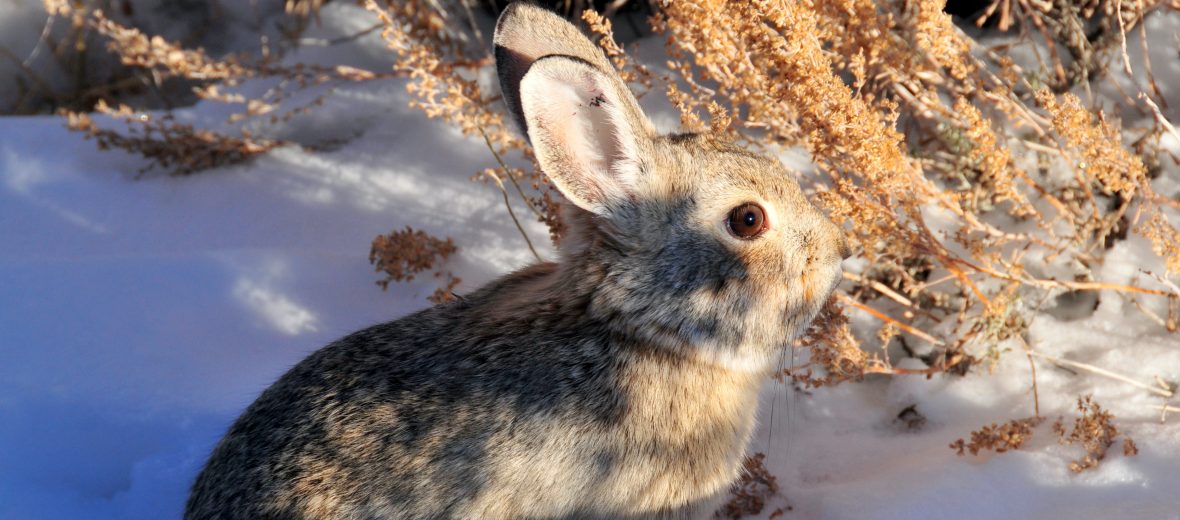
The pygmy rabbit hails from the United States. They prefer habitats with deep soil and tall, dense sagebrush that they utilize for shelter and food. These rabbits also favor locales near roads, streams, and fencerows. Pygmy rabbits face a host of threats such as habitat destruction and loss at the hands of residential and commercial developments, mining, agriculture, dams, fires, fire suppression, mining, and roads (which divide their territories and increase the risk of vehicle strike – being hit with vehicles); hunting; trapping; invasive species (and with them disease, predation, and competition for food); and climate change (resulting in droughts and/or flooding). Through all that, their populations seem stable and they are listed as Least Concern by the IUCN.
First the Stats…
Scientific name: Brachylagus idahoensis
Weight: Up to 16 ounces
Length: Up to 12 inches
Lifespan: Up to 5 years
Now on to the Facts!
1.) Pygmy rabbits are the only native North American rabbit species to dig their own burrows.
2.) They are a monotypic species (the only species) in the genus Brachylagus.
3.) While they can be cathemeral (active during the day and night), they are mostly characterized as being crepuscular (active at dawn and dusk).
4.) These bunnies are social creatures.
5.) A group of rabbits is called a nest or colony.
But wait, there’s more on the pygmy rabbit!
6.) They don’t hibernate during the winter.
7.) Their burrows are typically situated on slopes near the base of sagebrush plants. If the sagebrush is dense enough, then there won’t be as many burrows.
Did you know…?
Pygmy rabbits are the smallest known rabbit species in North America.
8.) Burrows can have up to 10 entrances and be up to 3.3 feet deep.
9.) In areas with shallow soil, these little rabbits dwell in stone walls, volcanic rocks, near abandoned buildings, and in abandoned burrows made by other creatures like marmots and badgers.
10.) Communication takes the place of body language and vocalizations like squeals and chuckles.
But wait, there’s still more on the pygmy rabbit!
11.) Grasses, forbs, and sagebrush are all on the menu.
12.) Females undergo up to a 30 day gestation (pregnancy) that yields up to 6 kittens.
13.) Being very cautious, they seldom ever venture farther than 60 feet from their burrows or the cover of sagebrush.
14.) During winter months when the ground is covered in snow, these rabbits spend most of their time in their burrows.
15.) Weasels, coyotes, wolves, American badgers, hawks, owls, and more all prey on pygmy rabbits.
Now a Short Pygmy Rabbit Video!
Be sure to share & comment below! Also, check out the Critter Science YouTube channel. Videos added regularly!
Want to suggest a critter for me to write about? Let me know here.
Some source material acquired from: Wikipedia & IUCN
Photo credit: USFWS Mountain-Prairie



